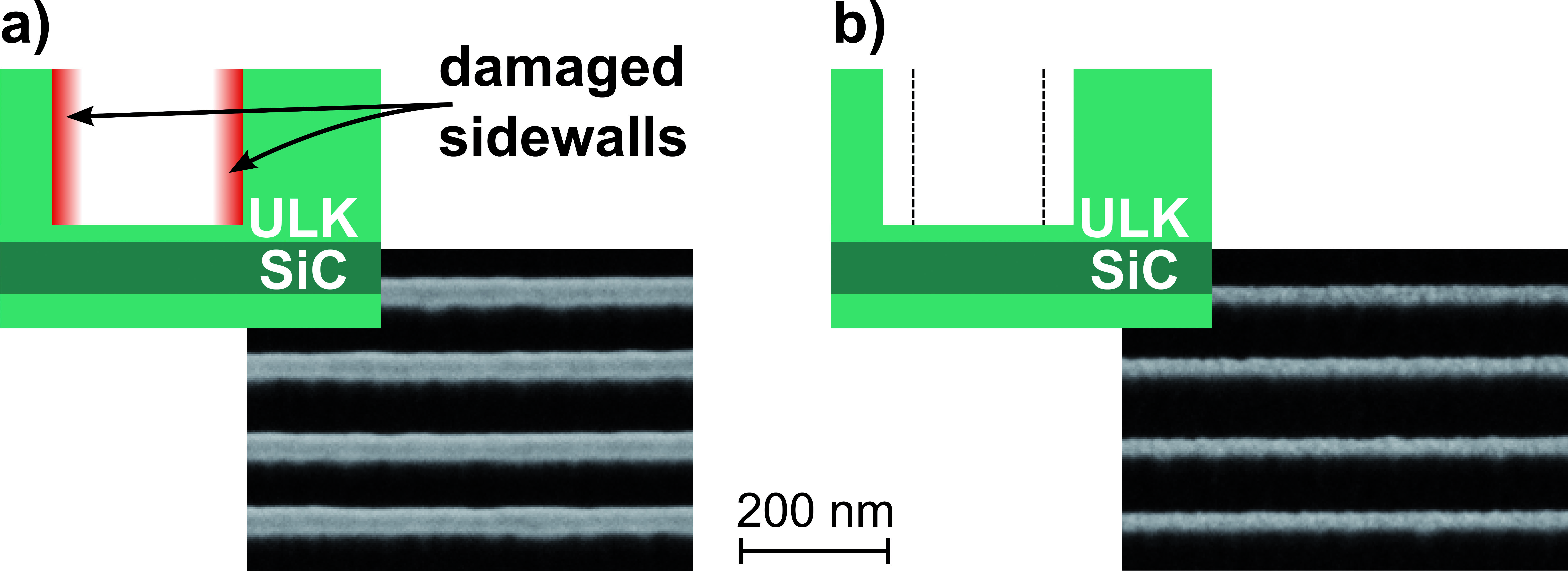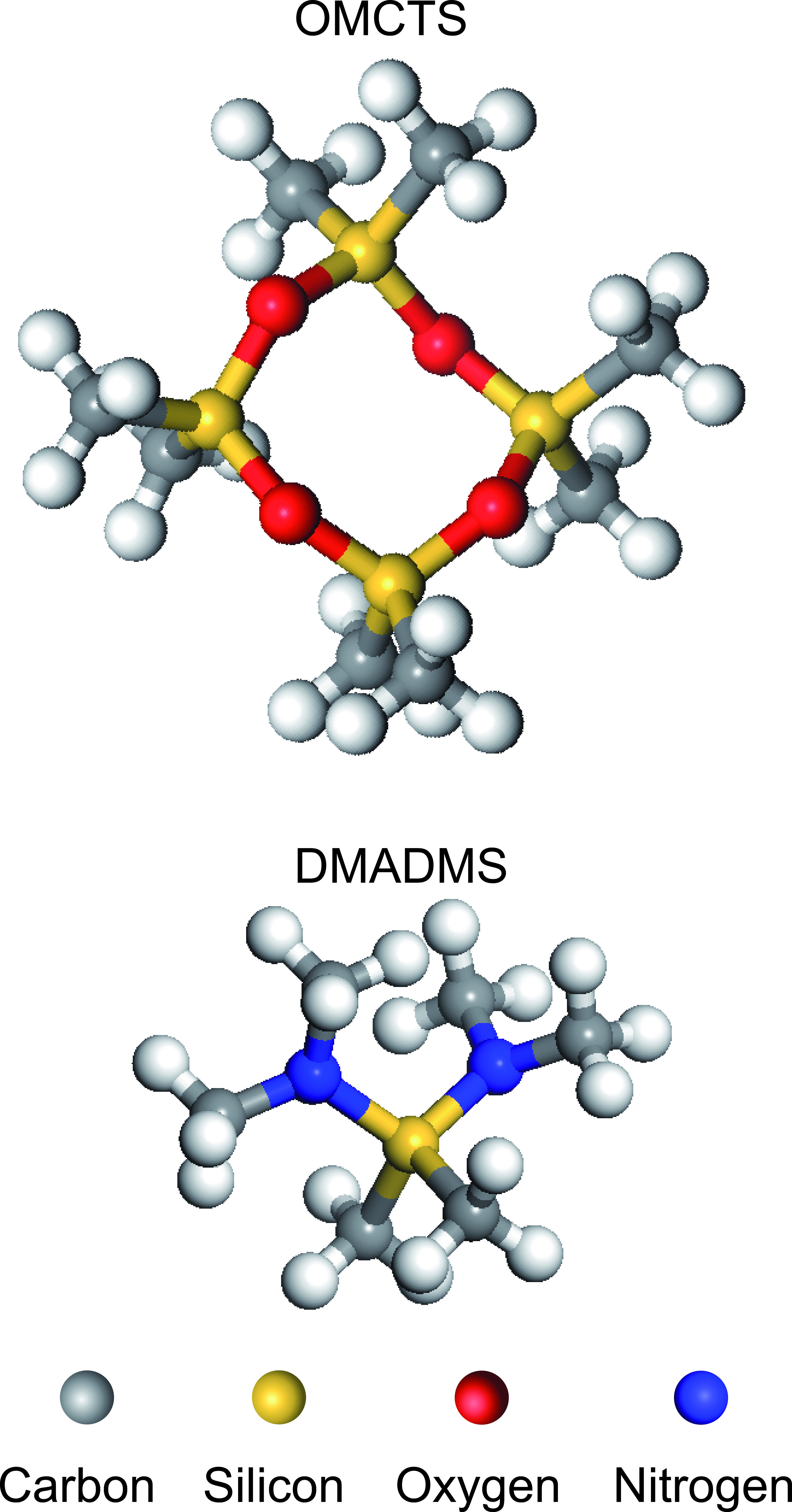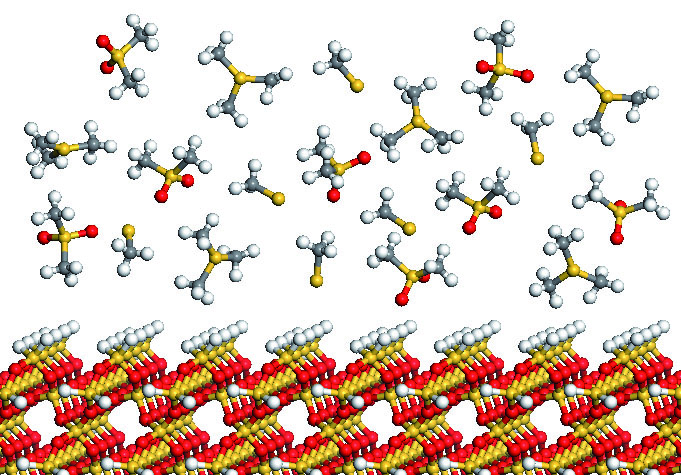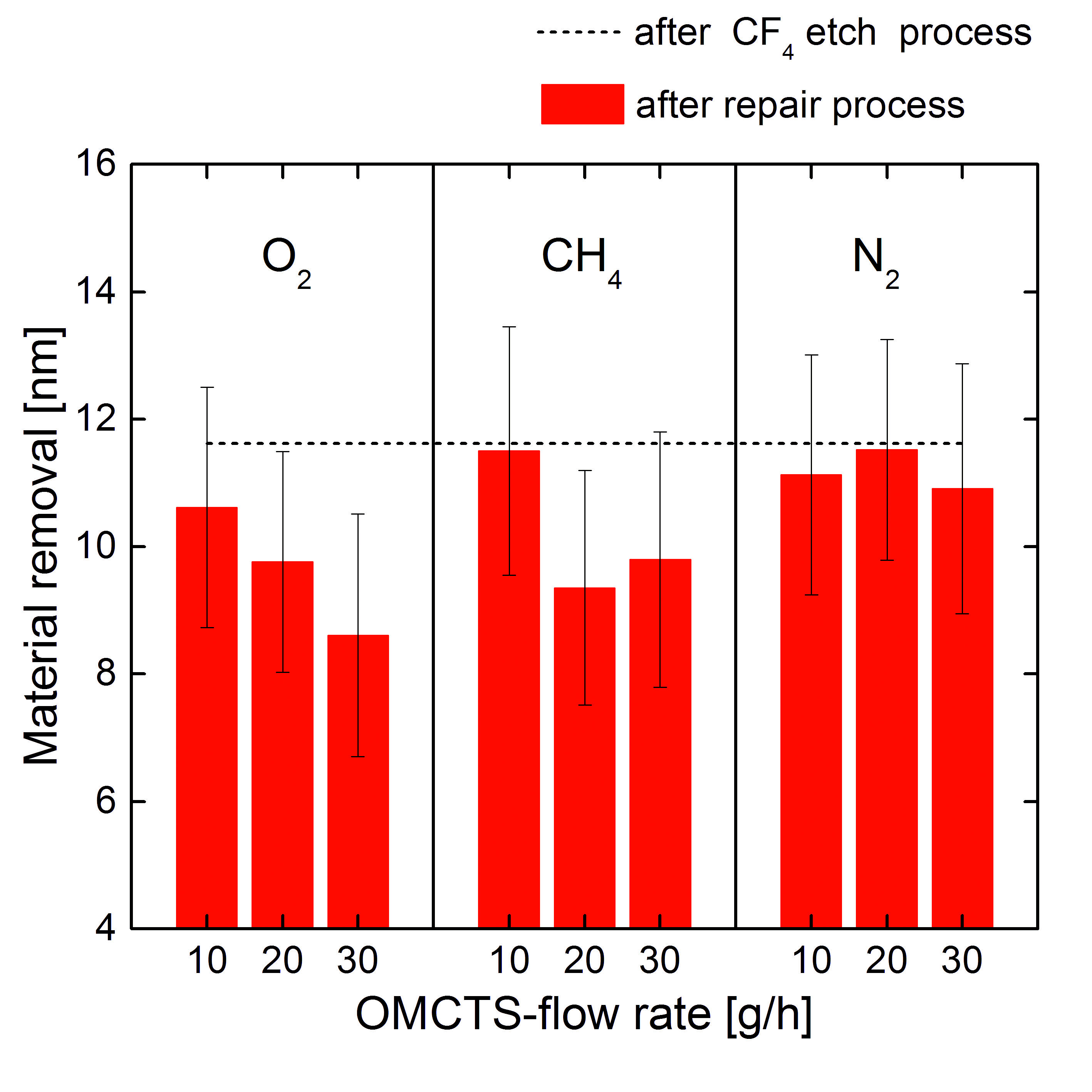

Plasma damage to ultra low-k (ULK) materials by pattering processes cannot be completely avoided. Therefore, restoration processes are still of high interest for further k-value improvement. There exists a large number of different silylation processes that repair polar Si-OH bonds to nonpolar Si-O-Si-CH3. Besides a poor integration in current technologies the repair effect is often limited to the surface due to the size of silylation molecules compared to the pore size. The plasma assisted in situ restoration process, developed at Fraunhofer ENAS, overcomes these problems by easy integration in existing process tools and process flows as well as a reduced size of repair species due to plasma fragmentation to enhance the diffusion behavior.
The experimental setup is based on an Applied Materials ASP chamber, which is embedded in a Centura Etch Cluster Tool. This enables a transfer of wafers between etch and repair chamber without vacuum break and prevents the damaged material from moisture uptake. The remote plasma produces radicals without exposing the samples to plasma to avoid UV radiation and ion bombardment. The repair liquids are evaporated by a direct liquid injection evaporation system.
For preliminary investigations OMCTS, as oxygen containing precursor and DMADMS as non-oxygen containing precursor were studied on blanket wafers. Patterned samples were analyzed regarding the depth of damaged material on the sidewalls. Since damaged ULK material can be wet etched by HF, the trench width of SEM topview images was measured by gray scale analysis before and after the wet etch to calculate sidewall damage.
Theoretical investigations
The simulation of fragmentation and repair reactions supports the experimental results and can help to obtain new insights into the plasma repair mechanism. Two different methods, density functional theory (DFT) and molecular dynamic (MD), were chosen to solidify the results. The fragmentation of the repair precursors OMCTS and DMADMS were investigated first. The most favorable fragmentation reaction for OMCTS is into four OSi(CH3)2 groups, whereas five oxygen containing repair fragments are possible in general. The advantage of these groups is the ability to occupy damage induced Si-H bonds without the necessity of silanol formation. The fragmentation of DMADMS results primarily in Si(CH3)3, especially in a methyl rich environment. The calculations have shown that the most effective repair fragments to occupy OH-groups and dangling bonds contain three methyl groups or two oxygen atoms. It could be seen that the repair fragments must contain at least one oxygen atom to be able to repair a Si-H group.
Experimental results
The experimental results clearly demonstrated that OMCTS is more effective for a plasma restoration process. This is consistent with the theoretical investigations, where only oxygen containing repair fragments can occupy a Si-H group. These dangling bonds are more expected than silanol groups due to the in situ handling. The process parameters temperature, precursor flow rate and the admixing of additional gases were investigated. The results have shown that the combination of these process parameters have to be chosen carefully to improve a repair reaction. Notably, the admixing of oxygen to the repair plasma influences the restoration process significantly. With too low OMCTS flow rates (< 5 g/h) a damaging behavior could be observed, which can be turned into a repairing effect after increasing OMCTS flow rate. The in situ plasma repair shows a sidewall restoration efficiency of more the 25 %.
Outlook
Ongoing investigations will include the impact of post-treatments as well as the mechanical characterization of the plasma restored material. Moreover, simulations of repair reactions in bigger silicon oxide clusters will be investigated (Fig. 4) to take the steric hindrance into account. An optimized plasma assisted in situ restoration process in combination with a well-adjusted etch process can reduce the sidewall damage problem significantly.
 Fraunhofer Institute for Electronic Nano Systems
Fraunhofer Institute for Electronic Nano Systems
